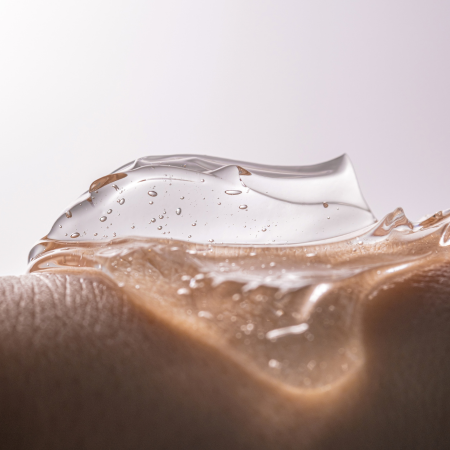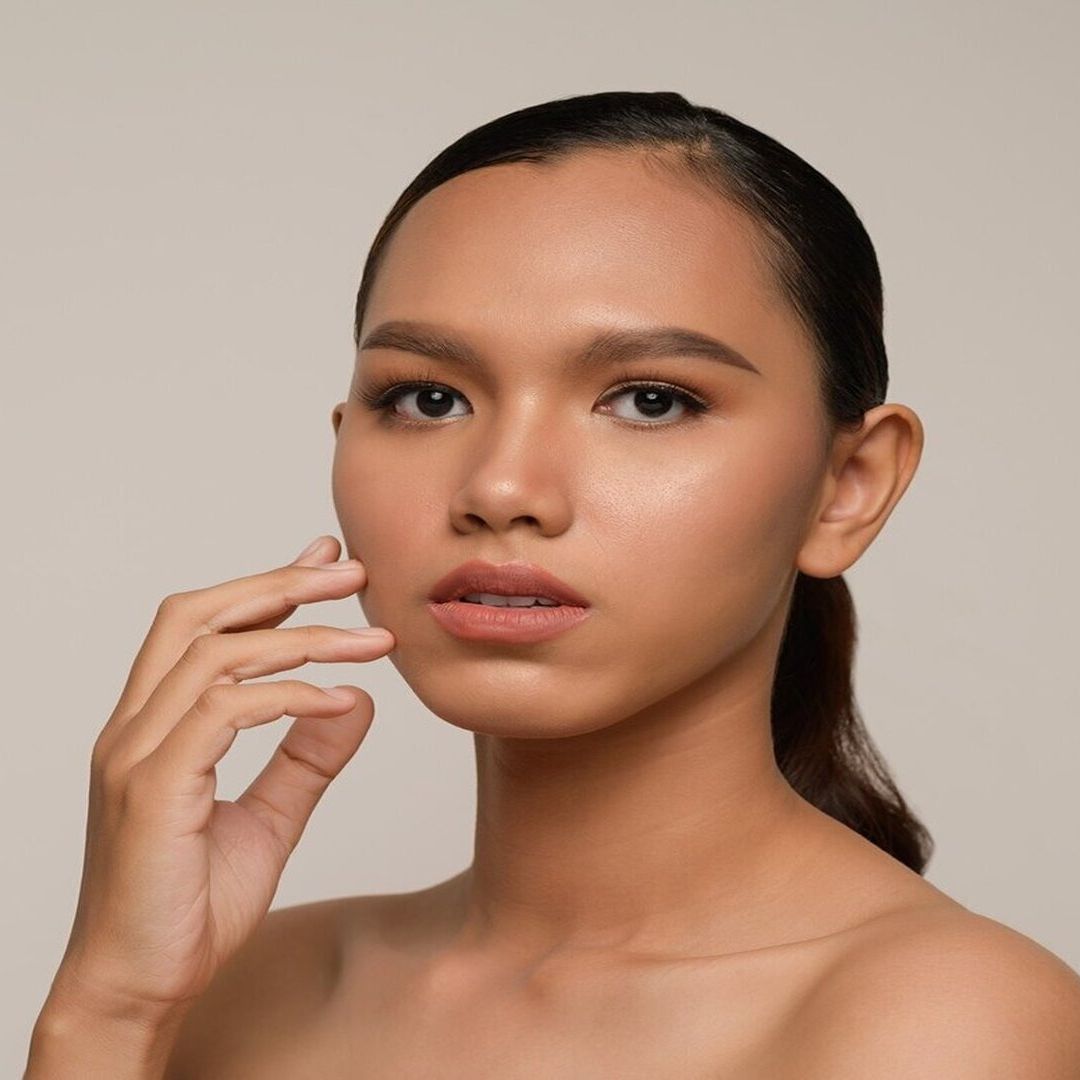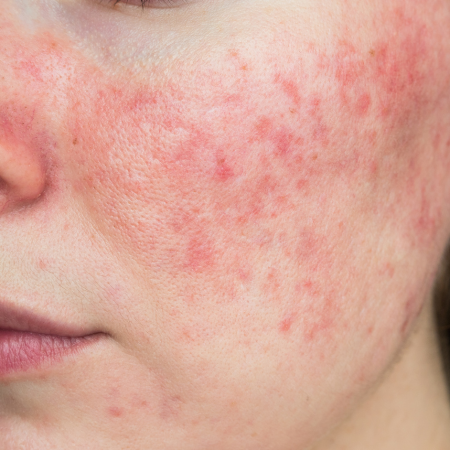Science of Threads: Common Causes of Dimpling
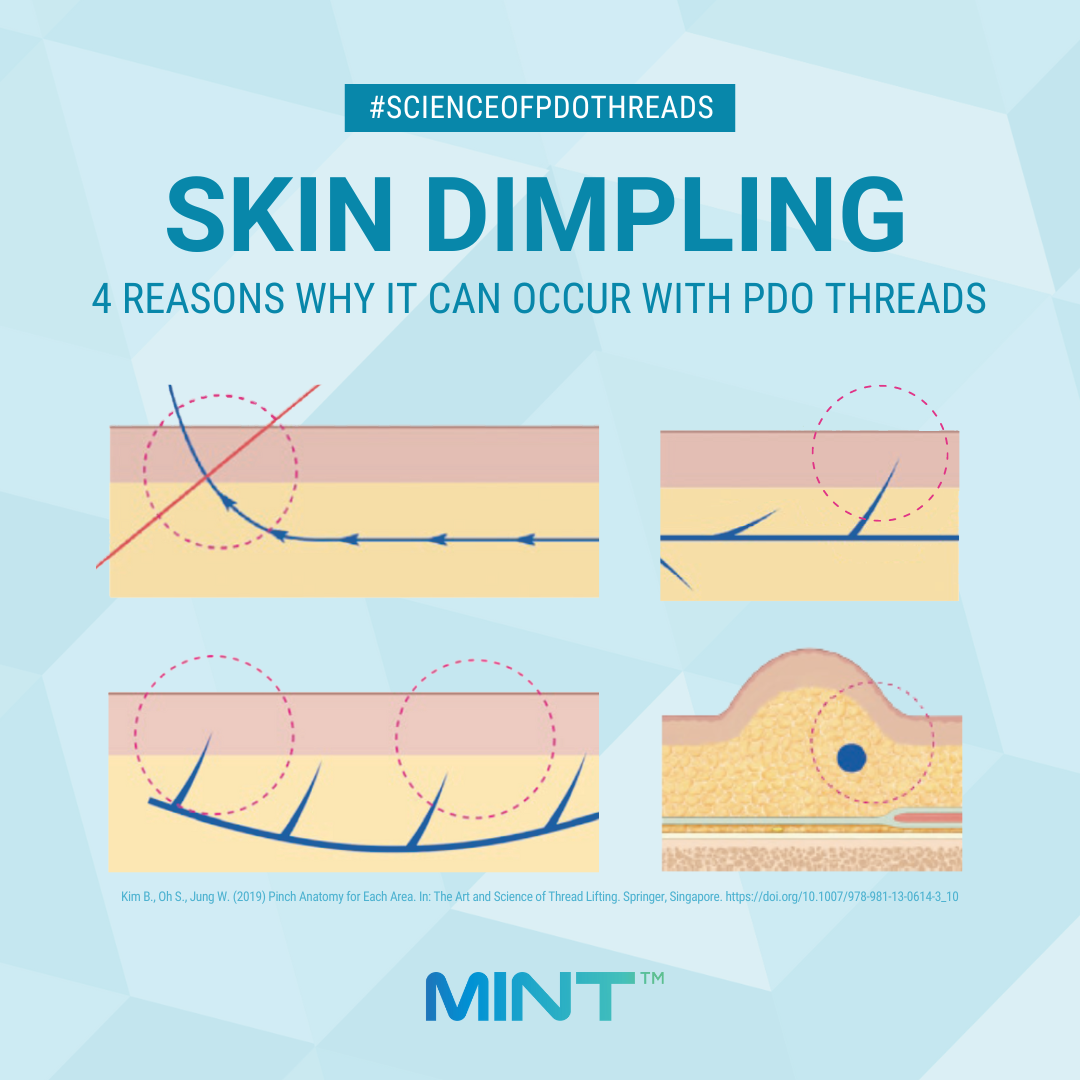
What causes PDO thread skin dimpling?
Why does dimpling occur with PDO threads?
In a previous post, we shared a study that showed common areas of dimpling. Dimpling can occur in areas where there are dense fibrous tissue or where change of facial expressions result in excessive motion of the muscle. If they form, it will usually occur 1 or 2 weeks after the procedure rather than immediately after, but less likely after a month.
The published reading
The Art and Science of Thread Lifting pointed out 4 reasons why dimpling may occur:
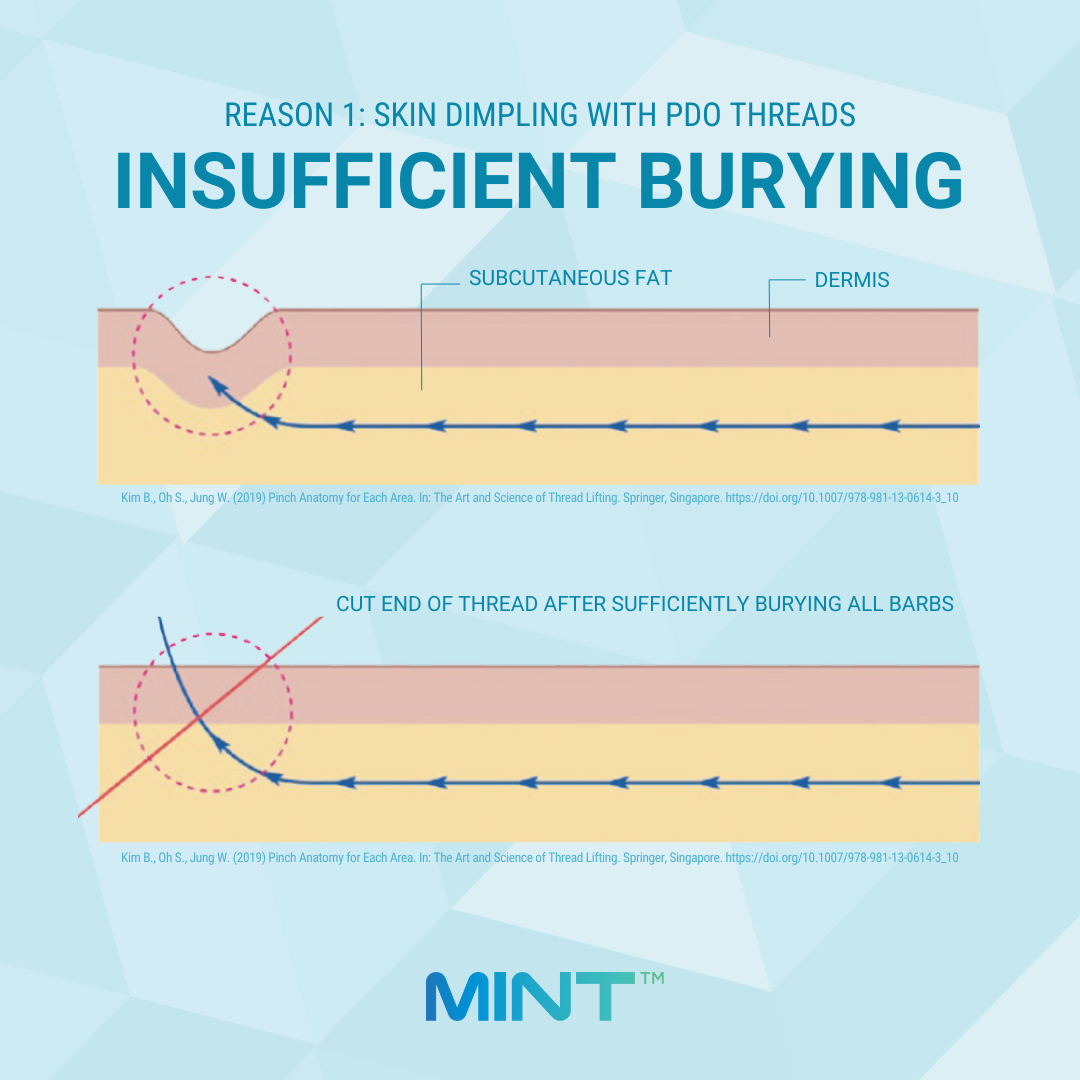
1. The barbed end of the thread was not buried sufficiently within the subcutaneous fat layer, sinking into part of the dermis.
Familiarize yourself with the thread design and length to prevent the probability of this occuring. Make sure the thread is engaged and anchored sufficiently within the subcutaneous layer before cutting the end of the thread.

2. The thread was inserted through the side and not the middle part of the pinch during pinch technique.
Practitioners often pinch or pull the skin during patient assessment and treatment, changing its original appearance. This difference in the internal tissue is referred to as pinch anatomy. Dimpling may occur when the thread is inserted through the side and not the middle part of the pinch during pinch technique. The force of the pinch must be properly controlled to insert at a consistent depth.
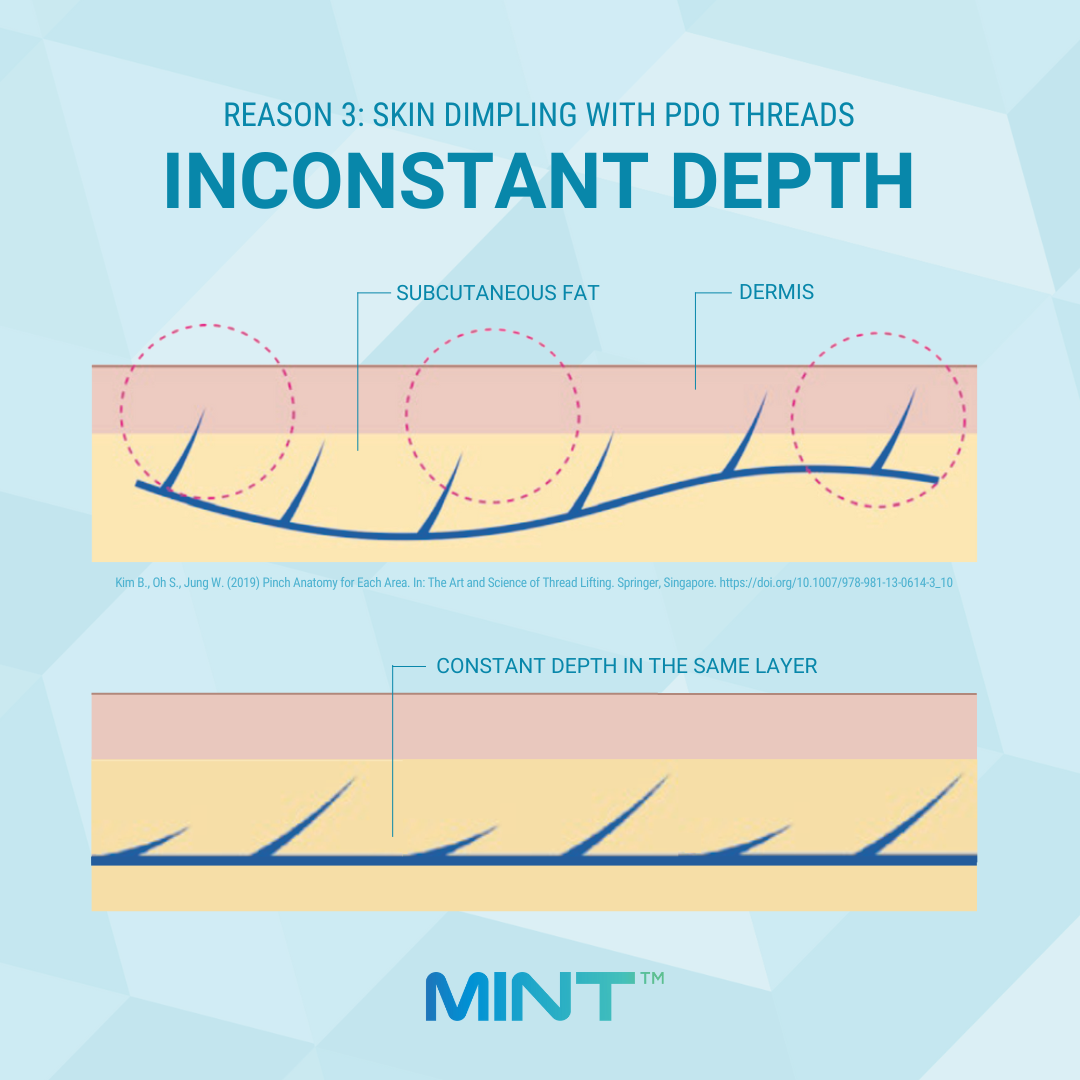
3. The depth of thread insertion is inconstant, causing barbs to get caught in the dermis.
The thread is placed in the subcutaneous fat layer but the depth of insertion is inconstant, causing barbs to get caught in the dermis. It is important to maintain a constant angle and pressure during thread insertion for the PDO thread to stay in the same plane so all the barbs are anchored in the subcutaneous layer.
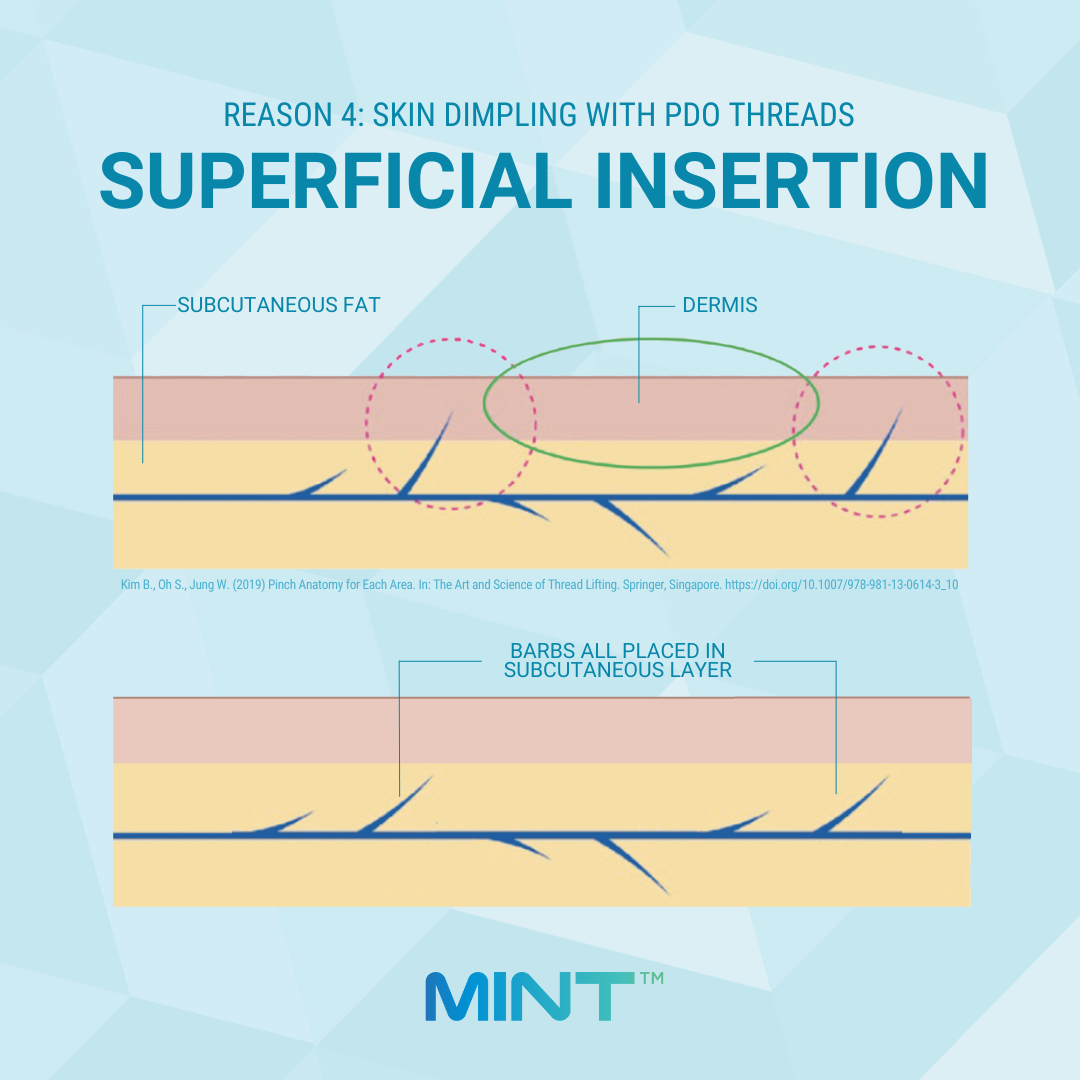
4. The thread was not inserted deep enough, so some barbs get anchored in the subcutaneous layer and some in the dermis.
The thread was inserted consistently but not deep enough in the subcutaneous fat layer, so some barbs get anchored in the dermis. Sinking may occur in this situation when threads with powerful barbs like MINT™ PDO get caught in the dermis. Practitioners must avoid staying too superficial in the subcutaneous layer to minimize barbs from catching in the dermis.
Side effects can happen whether you are completely new or experienced with PDO threads. It is crucial as a provider to manage patient expectations, explain the possible side effects, and to know the steps that need to be taken to address them should they occur. While dimpling can sometimes disappear on its own, providers should know how to massage the area of the dimpling to release the barbs and resolve the issue.
If you are looking to improve and refine your PDO thread skills, join us for a training session. Our MINT™ certified trainers will guide you and offer post-training support so you can confidently help your patients feel refreshed and beautiful.
References
Kim B., Oh S., Jung W. (2019) Pinch Anatomy for Each Area. In: The Art and Science of Thread Lifting. Springer, Singapore. https://doi.org/10.1007/978-981-13-0614-3_10
